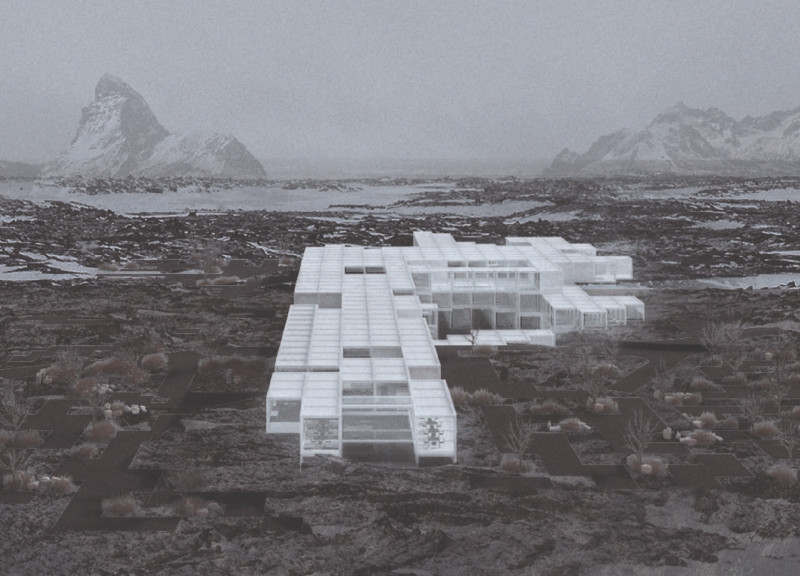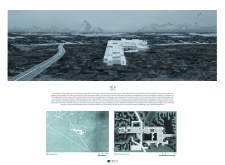5 key facts about this project
The TELA Museum is a thoughtfully designed space that blends with its surroundings, defined by the nearby volcano, lake, and natural pools. Located in a landscape filled with unique geological features, the museum serves as a cultural center, supporting a variety of art exhibitions while promoting a strong connection between the visitors and the environment. The design encourages exploration and interaction, creating a dialogue between the building and the outside world.
Structural Configuration
The museum is built using a series of overlapping steel modules that create a distinct shape. This framework not only defines the exterior but also allows for flexible internal spaces. The layout spans multiple levels to facilitate easy movement, with elevators and stairs placed strategically for smooth circulation. This organization enables visitors to explore different exhibition areas comfortably.
Exhibition Spaces
On the Plaza Floor, there is a central open square surrounded by versatile exhibition halls. These halls feature both permanent and mobile walls, making it easy to adjust the space for various art displays. This adaptability enhances the visitor experience, allowing for a diverse range of installations that can be set up according to the needs of specific exhibitions.
Community Integration
A key aspect of the museum is its role in the community, reflected in the performance areas located on the northeastern side. This section includes an L-shaped stage, designed for cultural events and festivals. A private dressing room for performers adds functionality to the space, encouraging community engagement and highlighting the museum's importance as a cultural venue.
Outdoor Connection
The design extends into outdoor areas that invite visitors to engage with the natural environment. Pathways and landscaped spaces encourage exploration and relaxation, creating an inviting atmosphere. This connection between the building and its surroundings is emphasized by the transitions from indoor galleries to outdoor areas.
Large windows on the upper levels provide views of the landscape, allowing visitors to appreciate the natural beauty outside while benefiting from generous light in the exhibition spaces. The careful arrangement of these features enhances both the practical use of the museum and the overall experience for those who visit.






















































